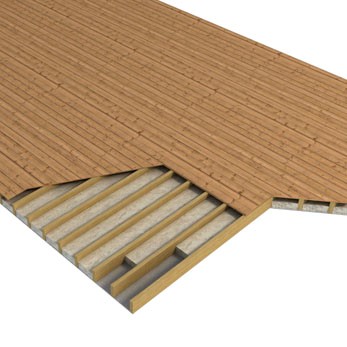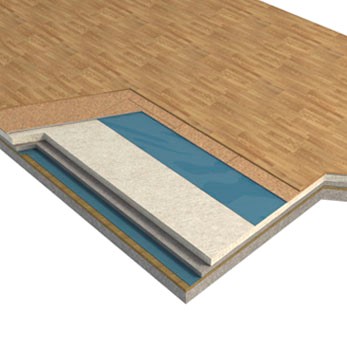Internal floor insulation
Aside from internal floors being able to support the different loads of a building, there are also regulations defining their performance in terms of fire resistance and, in England and Wales, requirements in terms of sound insulation too. Even where formal regulations do not exist, it would be reasonable to expect that an internal floor should provide good acoustic separation between storeys.
While thermal performance is not specifically regulated, the increasing focus being placed on the energy efficiency of an entire building means that it makes good sense to maintain optimum temperatures in different rooms.
Internal floor are generally either timber or concrete construction, and there are effective mineral wool insulation solutions for both.
Timber floor
Timber floors are typically constructed using either timber or metal joists. In each case, the installation of mineral wool insulation in the void between the beams will provide improved acoustic performance while also delivering significant benefits in terms of thermal performance without increasing floor depth.
Concrete
Where internal floors are constructed using concrete beam and block, acoustic and thermal performance will be enhanced with the installation of mineral wool insulation either above the concrete and/or within any ceiling void between the floor and a suspended ceiling below.
The benefits of Mineral Wool
- Value for money - more cost effective than any other material available
- Thermal performance - compression fit minimizes gaps at joints
- Acoustic performance - excellent sound absorption helps compliance with Part E
- Environmental - uses recycled material, zero ODP & GWP, BRE Green Guide A+ to B
- Fire properties - non-combustible and A1/A2 Euroclass fire rated
- Easy-to-fit - simple installation process


